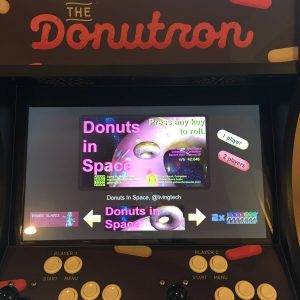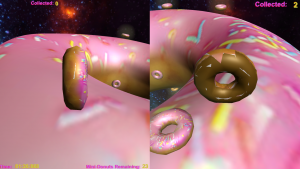First of all, the update to Catchup I mentioned a while back is finally live in the app store today! This got hung up a bit because Nick wanted me to make the new catchup rule the default. I told him I would definitely do this if he would handle translations of the rules update. (But of course wrangling a bunch of translators is much more difficult than the few lines of C++ needed to make the rule change itself!) So as of this writing, the rules change is still optional (and off by default). If and/or when we get some translated rules, I’ll probably push out another update to flip the default.
I’m also working on updates to some of my other apps. Unfortunately, it’s not really a straight-forward process, and there are some that will still probably not get an update at all. (Action Chess, for instance, just needs to be entirely re-written, which I’ve pretty much decided I’ll just do in Unity rather than go for iOS native.)
But in all the apps I’ve done so far, one thing I’ve had to do is change the code that shows the version number. I thought I’d write a mini-tutorial because this is kinda dumb. In pretty much all my apps, I previously had this block of code somewhere (usually in an AboutViewController class’s ViewDidLoad or ViewWillAppear method):
[self.versionLabel setText:[NSString stringWithFormat:@"v%@", [[NSBundle mainBundle] objectForInfoDictionaryKey:@"CFBundleVersion"]]];
…but now I’ve changed it to the following:
[self.versionLabel setText:[NSString stringWithFormat:@"v%@.b%@", [[NSBundle mainBundle] objectForInfoDictionaryKey:@"CFBundleShortVersionString"], [[NSBundle mainBundle] objectForInfoDictionaryKey:@"CFBundleVersion"]]];
This results in a version number that looks something like v1.4.b2.
(It’s worth noting that I highly recommend putting a user-facing build number in your all your apps somewhere. This is super important for getting bug reports and feedback. The technique above allows your code to update that user-facing number without having to include it in your code directly.)
In case it’s not clear, self.versionLabel is a UILabel instance, either initialized in code elsewhere, or (more likely) in a Xib or StoryBoard.
Anyway, Apple put out a technical note about version numbers and build numbers back in 2015, but somehow I missed it. Now I’m not 100% sure about this (possible it’s just that I was always confused about this), but my theory is that, at some point (maybe around 2015), the CFBundleVersion key changed functionality, from the version number to build number, and the CFBundleShortVersionString was introduced as the new version number. (This is really difficult to google for, I tried, so if anyone has a more accurate historical rundown, I’d be interested in hearing it.) Anyway, both string are required, but the build number is specific to the version number. (I.E. both have to increment for actual releases, but if you bump the version, you can reset build number back to 0 or 1, or whatever.)
These values are changed in Xcode, in the general project settings. Worth noting that the version number is shown to the user in the app store, but I don’t think build number is exposed anywhere (that I’ve seen). I usually try to follow semantic versioning, with the actual version number containing the first two dots (major and minor version changes), and more or less use the build number as the third “patch” number.
I guess the thing I find the weirdest about these bundle keys is that neither one is named “build”. And I would expect the build number to be the shorter one, not the version number. But maybe that’s just me! Hope this helps someone.



 This idea came, originally, hot on the heels of a renewed interest in pyramid games because I’d helped conceive and design these
This idea came, originally, hot on the heels of a renewed interest in pyramid games because I’d helped conceive and design these